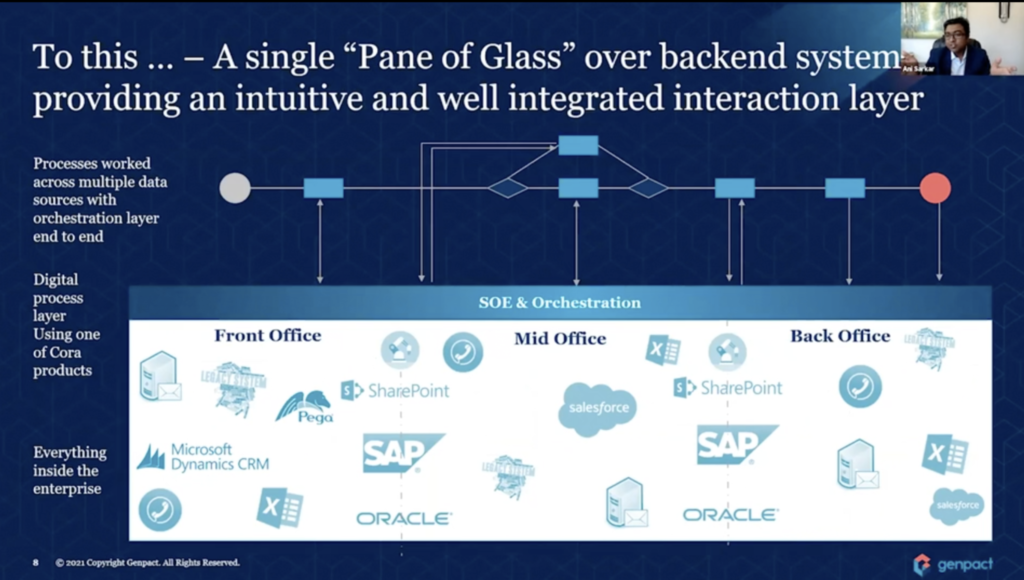
HITS Spring: Genpact Talks Bringing Your Technology Together
From lacking business insights to budget concerns for new technologies, and from broken and fragmented enterprise resource planning (ERP) systems to disparate data sources, the challenges of accelerating enterprise-wide digitization among media and entertainment companies is a constant struggle.
For global professional services firm Genpact, they keep seeing companies redo their systems or replacing them altogether, without thinking of a more measured approach: finding ways to make the technology you already employ talk to each other.
 “A lot of these companies have grown over time with acquisitions, and the trouble they have, because they’ve grown up these brands and agencies with autonomy to do whatever they like with the technology and data systems they have, when they want to drive insights, processes and functional cohesion, it can be a real struggle,” said Rachel Thomas, VP and transformation partner for Genpact, speaking May 12 at the annual Hollywood Innovation and Transformation Summit (HITS) Spring event, during the presentation “More for the Money: How to Maximize IT Investments and Avoid Expensive Makeovers.”
“A lot of these companies have grown over time with acquisitions, and the trouble they have, because they’ve grown up these brands and agencies with autonomy to do whatever they like with the technology and data systems they have, when they want to drive insights, processes and functional cohesion, it can be a real struggle,” said Rachel Thomas, VP and transformation partner for Genpact, speaking May 12 at the annual Hollywood Innovation and Transformation Summit (HITS) Spring event, during the presentation “More for the Money: How to Maximize IT Investments and Avoid Expensive Makeovers.”
Ani Sarkar, VP of media and entertainment for Genpact, said there’s a simpler, faster and better way to bring your essential data elements into one single area, using machine learning and AI to automate routine workflow and decision-making processes, and enabling virtualized production and smarter operations.
“it’s a true reflection of what business operations are going through these days,” Sarkar said. “The complexities in these organizations are tremendous. Mergers and acquisitions continue to drive further adoption of all these legacy technologies, different ERP systems trying to talk to each other.
“There’s this entire notion of completely fragmented and varied structures and data sources. And there are too many non-standard processes across the business units.”
Take all of that together, and the lack of analytical models addressing all this disparity in data and systems results in a lack of business insights, and, ultimately, missed revenue and higher costs of operations.
What Sarkar continues to see media and entertainment companies employ is a “Band-Aid strategy” with companies working within their own siloes and implementing short-term technological fixes to what eventually may become a long-term headache.
That results in a huge stack of systems that aren’t talking to each other, which can be complicated and messy to deal with the further along you go, he said.
 “We’re trying to fix our business problems with technology, not with processes,” Sarkar added. He and Genpact see the way out of this as such: deploy a single “pane of glass” technology over the backend system that works across the front, middle and back office, one that works across numerous data sources with an end-to-end orchestration layer.
“We’re trying to fix our business problems with technology, not with processes,” Sarkar added. He and Genpact see the way out of this as such: deploy a single “pane of glass” technology over the backend system that works across the front, middle and back office, one that works across numerous data sources with an end-to-end orchestration layer.
“Organizations will always have to live with disparate data sources, and probably always with some sense of fragmentation on the back end when it comes to ERP systems,” Thomas said.
To view the entire presentation, click here.
HITS Spring was presented by IBM Security with sponsorship by Genpact, Irdeto, Tata Consultancy Services, Convergent Risks, Equinix, MicroStrategy, Microsoft Azure, PacketFabric, Richey May Technology Solutions, Tamr, Whip Media, Eluvio, 5th Kind, LucidLink, Salesforce, Signiant, Zendesk, EIDR and the Trusted Partner Network.
